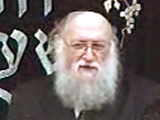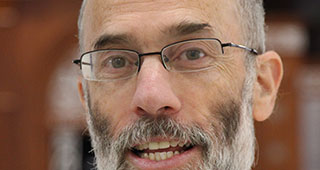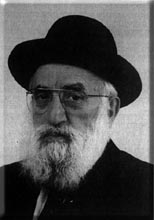Beit Midrash
- Sections
- Chemdat Yamim
- Bemare Habazak - Rabbis Questions
Answer: The gemara (Chulin 107a) provides some of the rules for thekli (utensil) used for netilat yadayim, including that it must be able to hold a reviit of water. Potentially pertinent for your question, it says that it is unfit for use if it has a hole of a koness mashkeh (i.e., not only is the hole big enough for water to seep out through it, but water would even seep into the cup through the hole from an external pool of water.)
There is a machloket Rishonim as to the reason for the disqualification (see Beit Yosef, Orach Chayim 159). According to the Semag, a cup with a hole of that size is not considered a kli (utensil) in regards to various halachic matters including netilat yadayim. According to the Rosh, the cup is generally a kli, but the area above the hole is considered beyond the confines of the kli (as it does not reliably hold water above that point). The issue is that the water must be poured onto the hands from the walls of the kli. One practical difference between the opinions is whether one can pour water onto the hands from the hole, not from the top of the cup. According to the Rosh, that is fine because you are pouring from the top of the kli-part of the cup (the cup should be able to hold a reviit up to the height of the hole). According to the Semag, the cup is totally lacking in status due to the hole, and it does not matter how high the hole is or from where the water is being poured. The Shulchan Aruch (OC 159:2) rules like the lenient Rosh that one can do netila through the hole. On the other hand, many Acharonim are machmir if the cup is made from pottery/ceramics (Mishna Berura 159:10). (We imagine your cup is ceramic, as metal and plastic ones rarely "chip.")
Your case has elements of relative leniency and of relative stringency if the chips are big enough to be considered a hole. On the one hand, if there are only small chips on the top of the cup, it is hard to believe that this would disqualify the cup from being a kli, as it does not impede the use of the cup to hold liquid in any serious way. On the other hand, as opposed to the case of a hole in the middle of a cup, where the water will only go through the hole, from where will you pour the water? If you do it randomly or purposely from the not chipped places, then you are pouring from a place that extends beyond the height of a complete circumference of cup, which, based on what we have seen should be a problem. The Mishna Berura (159:12) says that while it is not ideal to use a cup with a piece missing on top, if that is the only available cup, one should pour out from the chipped part, which is lower. Practically speaking, though, unless it is a broad or deep chip, it will be hard to pour only or even mainly through the crack.
Perhaps the following will help. The Eshel Avraham (to Magen Avraham 159:4) says that if the height of the cup is not uniform but that fact is not clearly recognizable to the eye, it is not a problem to pour from the higher side. His main logic is that "the Torah was not given to angels," who can be exact. He also points out that, anyway, the surfaces upon which a cup normally sits are not exactly straight, so that slightly higher and lower is meaningless. Piskei Teshuvot (159:10) says that the same thing is true for slight height differences due to a chip. It is not clear to me how far one can take this comparison. If there is a slight dent in a plastic or metal cup, it is indeed hard to tell the height difference. Regarding ceramics, though, it is much more common for even small chips to make the area of the chip noticeably lower than the area right around it.
Therefore, in general, the best thing to do is to insert a filler material to more or less reverse the chipping. Although some sources discuss using filler of the same material (see Taz, OC 159:1), anything that works securely should be fine (see practical approach of Chazon Ish, OC 21:5).

Bemare Habazak - Rabbis Questions (628)
Rabbi Daniel Mann
265 - Animal Experimentation
266 - Netilat Yadayim from a Chipped Cup
267 - Calling a Kohen Who is a Katan
Load More

Ask the Rabbi: Minyan or Tallit and Tefillin?
Rabbi Daniel Mann | Tammuz 5785

Ask the Rabbi: Forgot to Remove Tefillin Before Musaf of Rosh Chodesh
Rabbi Daniel Mann | Kislev 5786

Ask the Rabbi: Sacrificing Davening to be the Tenth Man
Rabbi Daniel Mann | Sivan 5785

Ask the Rabbi: Cutting Off Threads
Rabbi Daniel Mann | Tammuz 5785

Rabbi Daniel Mann

Encouraging a Child to Criticize His Parent
5774

Bikur Cholim by Electronic Means
Shvat 1 5782

Making Sure your Check Is Cashed
Kislev 5783
























